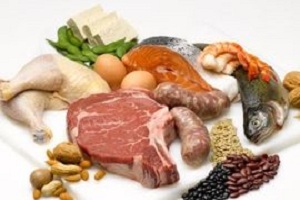Balanced healthy diet
When is the best time to consume carbohydrates, proteins and fats? What size should your portion be? And what is your ideal number of calories consumed per day? Choose your diet wisely and you will be able to eat healthy food 24 hours a day...
Women's nutrient intake requirements differ from men's. In the article below, a nutritionist offers her advice and recipe ideas for women looking for a balanced diet - but what exactly does "balanced nutrition" mean? There are several simple rules, designed to eat five times a day. Each meal includes whole grain products, a large amount of fish, and poultry. However, it is recommended to reduce your consumption of red meat, choosing low-fat dairy products instead. But that is not all. It is important to know the best time to consume proteins, fats and carbohydrates. In this guide, you can learn how to eat healthy 24 hours a day.
Volume of consumption (VOC) is a new term in the Recommended daily norm consumption (English)GDA)
Nutritional needs vary by gender, weight, age and activity level, so use this chart as a general guide only. The table shows the daily amount recommended for a healthy, balanced diet, with the goal of maintaining rather than losing or gaining weight. In general, women need fewer nutrients than men, with the exception of substances such as salt and fiber.
Perfect Portions
 Numbers are, of course, very good, but how do they relate to you? Calculate your personal portion with our guide:
Numbers are, of course, very good, but how do they relate to you? Calculate your personal portion with our guide:
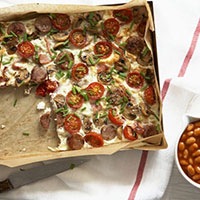 Jumpstart your metabolism by including protein in your breakfast. Opt for eggs, salmon, lean ham or low-fat dairy products. We burn more calories digesting protein than digesting carbohydrates. And because high-protein foods keep you fuller longer, you'll eat fewer calories throughout the rest of the day.
Jumpstart your metabolism by including protein in your breakfast. Opt for eggs, salmon, lean ham or low-fat dairy products. We burn more calories digesting protein than digesting carbohydrates. And because high-protein foods keep you fuller longer, you'll eat fewer calories throughout the rest of the day.
A protein-packed breakfast is quick to prepare—just top some scrambled eggs, a piece of smoked salmon or some lean ham on toast, and if you have a little more time on your hands, treat yourself to an omelette or frittata.
Breakfast should never be skipped, as it helps lower your blood sugar, which in turn helps you curb your appetite and reduces the risk of reaching for junk food later in the day. Remember that breakfast makes an important contribution to your daily diet and plays huge role in maintaining normal weight.
Protein breakfast recipes:
Scrambled eggs with toast
Fried eggs with vegetables
Lightly fried smoked salmon with bagel and egg
Large English frittata with beans
Smoked salmon and mascarpone tortilla
 Eating little and often is great way normalize your blood sugar levels, but this does not mean you will eat more. You will simply spread out your daily calorie intake throughout the day. Eat every meal with the thought that you are meeting all your body's needs while meeting your five-meal-a-day plan.
Eating little and often is great way normalize your blood sugar levels, but this does not mean you will eat more. You will simply spread out your daily calorie intake throughout the day. Eat every meal with the thought that you are meeting all your body's needs while meeting your five-meal-a-day plan.
Swap your morning biscuit for a banana and oatmeal cookie topped with peanut or almond butter, or treat yourself to some veggie sticks.
Almond oil
Beans, feta and greens
 Make your lunch a mix of lean protein and starchy carbohydrates. Foods rich in carbohydrates provide energy, without them you will suffer from afternoon bouts of apathy. Carbohydrates, which stabilize blood sugar levels, will help avoid this. You just need to skip all those sugary foods and opt for fiber-rich whole grains that will help you avoid the afternoon snack.
Make your lunch a mix of lean protein and starchy carbohydrates. Foods rich in carbohydrates provide energy, without them you will suffer from afternoon bouts of apathy. Carbohydrates, which stabilize blood sugar levels, will help avoid this. You just need to skip all those sugary foods and opt for fiber-rich whole grains that will help you avoid the afternoon snack.
Choose a rye bread sandwich with salmon, chicken or low-fat dairy with a generous side salad, or whole grain toast with baked beans.
Protein-carbohydrate lunch recipe:
Sandwich with mackerel and dill
Sandwich with chicken Caesar
Sandwich with rye bread, smoked salmon and avocado
Sandwich with processed cheese and pepper
Salmon with garlic bagel and herbs
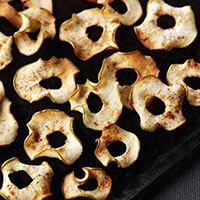 Satisfy your sugar cravings and energy needs with fruits. Eating dried fruit with unsalted nuts or seeds will provide you with protein and healthy fats so that you won't get hungry until dinner.
Satisfy your sugar cravings and energy needs with fruits. Eating dried fruit with unsalted nuts or seeds will provide you with protein and healthy fats so that you won't get hungry until dinner.
Instead of a chocolate bar, eat some dried apple rings, a few almonds or walnuts. Dried fruits are five times sweeter than their fresh counterparts - which is great if you exercise or hit the gym in the afternoon. The combination of dried fruits and nuts stabilizes the absorption of the sugar they contain and keeps you in good shape. long time. Alternatively, you can stock your fridge with low-calorie snack foods like cherry tomatoes, grapes or vegetable crudités, which will keep you from reaching for a muffin when you're craving something sweet or crunchy.
Sweet snack for afternoon tea:
Spicy apple chips
 It's time for carbs. They contain virtually no fat, are rich in fiber and will help you relax during the day. evening time. Combine them with healthy natural fats found in fish, such as salmon, mackerel or sardines, as well as nuts, seeds and their oils. Your body uses them during nighttime sleep for regeneration and repair, which is very important for healthy skin and hair.
It's time for carbs. They contain virtually no fat, are rich in fiber and will help you relax during the day. evening time. Combine them with healthy natural fats found in fish, such as salmon, mackerel or sardines, as well as nuts, seeds and their oils. Your body uses them during nighttime sleep for regeneration and repair, which is very important for healthy skin and hair.
Make a half-plate salad with assorted vegetables or lettuce, drizzle with flaxseed or grapeseed oil dressing, add meat, fish or beans with brown rice, quinoa or whole grain pasta.
Recipes for a healthy dinner:
Mexican Chicken Stew with Quinoa or Beans
Miso Shrimp with Vegetarian Rice Salad
15 minute noodle dinner
Salmon in soy-ginger sauce with soba noodles
Brown miso rice and chicken salad
Kerry Torrance, nutritionist for BBC Good Food magazine.
A properly balanced diet is one of important conditions maintaining health. The amount of energy entering the body with food must correspond to the amount of energy expended. Before you balance your diet, analyze how active your life is. If you move a lot, you can increase the amount of fats and oils in your daily diet. A properly balanced diet with a sedentary lifestyle should include large quantity fruits and vegetables.
You should include a variety of foods in your daily diet so that your diet does not seem monotonous. At the same time, it should be: energetically balanced; full-fledged; regular; with optimal cooking. Below you will learn about healthy and unhealthy foods, the content of which in the diet should be increased or, conversely, reduced.
Classification of food products by groups
The classification of food products into groups is as follows:
- first group of products: bread, cereals and pasta, rice and potatoes;
- second: vegetables and fruits;
- third food group: meat, poultry, fish, legumes and eggs;
- fourth: dairy products (milk, kefir, cottage cheese, yogurt, cheese);
- fifth group: fats and oils;
- sixth: foods whose consumption should be limited (salt, sugar, alcohol).
These are the main food groups on which the entire daily diet is based.
The importance of bread and cereals in human nutrition
Bread in human nutrition, as well as cereals and pasta, rice and potatoes form the main diet.
The importance of bread in human nutrition is difficult to overestimate - it is an important source of proteins, carbohydrates, fiber, minerals (potassium, calcium, magnesium) and vitamins (C, B, carotenoids, folic acid). It is advisable to eat bread, cereals and pasta, rice and potatoes several times a day at each meal.
1 unit = 1 piece of bread
1 unit = 1/2 dessert plate of ready-made porridge
1 unit = 1 dessert plate of potatoes
1 unit = 1 dessert bowl of soup
If all 6-11 units. This group of foods will be refined, that is, peeled, polished, without fiber and nutrients, then you are consuming empty calories. In this case, the healthy whole grains in best case scenario accounts for 1 unit. After cleaning the grain, there is practically only starch left in it, which is quickly digested by the intestines to glucose. As a result, “good” cholesterol decreases, triglyceride levels increase, and the risk of diabetes increases. Therefore, speaking about the importance of cereals in nutrition, first of all, we mean unprocessed grain.
How to balance your diet by increasing the proportion of whole grains
How can you increase the proportion of whole grains in your daily menu and make consuming this food group healthy for your heart?
For breakfast, prepare whole oatmeal porridge or muesli with a high content of whole grains. In order not to spend a lot of time in the morning preparing porridge, cook it in the evening in large quantities and put it in the refrigerator. Add nuts, fruits, dried fruits, honey to the porridge, and then you will be provided with a nutritious, varied breakfast for several days.
Replace baked goods made from high-grade, refined flour with bran bread and whole grain rolls.
Cereals are of great importance in human nutrition: buckwheat, brown rice, wheat groats.
Add barley and wild rice to soups.
To meat and chicken cutlets were healthier, add whole grain bread crumbs to the minced meat.
Proper, healthy nutrition: vegetables and fruits in the human diet
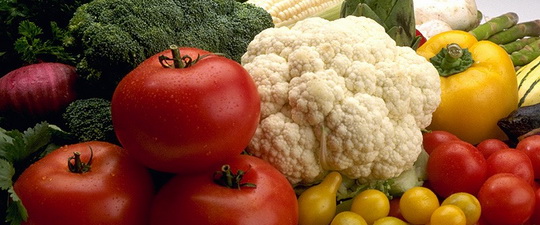
IN proper nutrition vegetables and fruits take special place. They are a major source of fiber (fiber), vitamins and minerals. The more varied our diet is in vegetables and fruits, the more balanced our healthy diet will be.
1 unit = 1 medium vegetable or fruit
1 unit = 1 dessert bowl of vegetable soup
1 unit = 1/2 cup freshly squeezed fruit juice
Cholesterol is found in many animal products and is practically absent in plant foods. Liver, kidneys, brains, egg yolks, fish roe, and shrimp are especially rich in it. Under conditions of constant excess consumption of animal foods enriched with cholesterol, it begins to accumulate in the blood.
It is advisable to regularly include in your diet foods that remove cholesterol from the intestines - this is water-soluble fiber. It is found in fruits, berries, and the surface layers of grains (especially oats). When heated, soluble fiber forms a jelly. Therefore, morning porridge made from oatmeal (rolled oatmeal) or muesli, dessert made from apples and berries help remove cholesterol from the body.
Rational balanced diet: vegetables and fruits
![]()
Always keep a bowl of fruit, small carrots, cherry tomatoes and other vegetables on the table.
Fruits and vegetables in the human diet can be not only fresh. Store frozen vegetables and fruits in the refrigerator, which, if quickly processed and properly stored, almost do not lose vitamins.
IN free time Shred the cabbage, carrots, beets, chop the onions and put them in bags and put them in the refrigerator. During working week this will all come in handy!
Buy canned vegetables and fruits for future use or make your own.
IN balanced diet When eating, don’t forget about dried fruits.
Eat vegetables and fruits from your garden without peeling them; they are rich in fiber and vitamins.
What you need to know about nitrates?
According to WHO standards, the permissible daily dose of nitrates is 5 mg per kilogram of human weight.
All plants extract nitrates (salts of nitric acid) from the soil and convert them into organic nitrogen-containing compounds (amino acids, proteins, etc.). The high content of nitrates in plants is due to the excess amount of mineral fertilizers.
Nitrates themselves are harmless to our body. But some of them turn into nitrites (salts of nitrous acid), which can block cell respiration. Hemoglobin binds, cholesterol and lactic acid levels increase. From this we can conclude: nitrites are poison.
Most nutritionists believe that in a rationally balanced diet, the benefits of including in the diet large quantity vegetables and fruits are far superior possible harm from pesticides. But try to avoid introducing harmful chemicals into your body - wash vegetables and fruits thoroughly, remove the peel if necessary, even if this means losing some nutrients.
With a balanced healthy diet, vegetables and fruits should be eaten several times during the day in quantities of up to 400 g/day in addition to potatoes.
Meat as a product, its role and importance in human nutrition
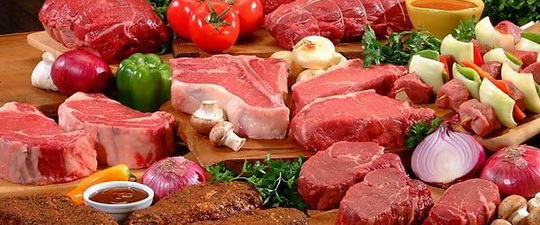
Meat in the human diet, as well as poultry, fish, legumes and eggs, are a source of protein, minerals and B vitamins.
1 unit = 85-90 g cooked meat
1 unit = 1/2 leg or breast of chicken
1 unit = 3/4 dessert plate of chopped fish
1 unit = 1/2-1 dessert plate of legumes
1 unit = 2 tablespoons nuts
A middle-aged adult working on a lung physical labor, 100 - 120 g of meat per day is enough.
Speaking about the importance of meat in nutrition, first of all, it means relatively lean products. What meat is considered lean? If 100 g of a product contains no more than 10 g of fat, then it is relatively low-fat. It is best to eat lean pieces of veal and beef. The benefits of meat in human nutrition are difficult to overestimate. The most useful are tenderloin, shoulder part for stewing, loin, super-lean rump and rump. Give preference to skinless poultry meat (chicken, turkey), replacing fatty varieties of beef and pork. Poultry breast is considered the most healthy.
In order to increase the importance of meat in human nutrition, it is best to consume it boiled. You can stew the meat (lightly fry it first) or cook it in the microwave. If a crispy crust appears on the meat, then carcinogenic substances can form in it.
Try to eat less often sausages, sausages, smoked meats and pates, which contain large amounts of fat and offal.
The benefits of meat in a healthy, balanced diet
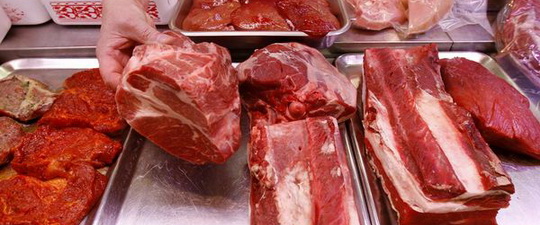
When using meat as a food product, you should try to prepare low-fat dishes:
- bake the meat (coat it with olive oil so that the juice does not leak out) in the oven or on the grill;
- remove excess fat from the surface of soups;
- make cutlets from lean meat;
- buy thin sausages so that more fat is lost during cooking;
- Before cooking the bird, remove the skin.
Remember that the role of meat in human nutrition is very high; complete abstinence from meat can lead to anemia, especially in young women.
Healthy eating: the importance of fish in human nutrition
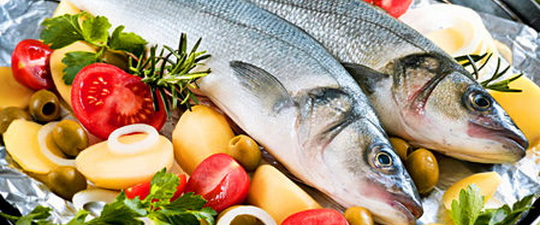
The amino acid composition of fish is almost the same as that of meat. However, fish proteins are easier to digest and better absorbed by the body.
White fish contains a low percentage of fat: pike perch - 0.7%, carp - 3.5%, cod - 0.4%. Therefore, fish in human nutrition can be considered a low-calorie product in comparison with meat. Fatty fish: sardine, mackerel, trout, salmon are higher in calories, but they contain mainly unsaturated fats. It is rich in healthy omega-3 fatty acids, which, when consumed regularly, protect the heart and blood vessels from disease.
Fish is especially important in the diet for the prevention of myocardial infarction. The required amount of omega-3 fatty acids for the prevention of myocardial infarction is 500 - 1000 mg per day. This amount is contained in 3-4 servings of 200-300 g of fatty fish per week.
Fish in a balanced, rational diet

The importance of fish in human nutrition is so high that to maintain the normal functioning of the body it is necessary to eat 3-4 servings of fish per week.
Use canned fish own juice, and not in oil, since it is very high in calories, add them more often to different dishes:
- salads with potatoes, fried onions, olive oil or low-calorie mayonnaise;
- pasta casseroles;
- hot toast and pizza;
- filling for pies and pancakes.
For healthy eating fish or fish cakes should be present in the diet.
Very healthy shellfish (oysters, mussels, scallops), which are rich in protein and low in fat.
If you don't like fish, take fish oil capsules to ensure a balanced diet.
Fish oil is the only type of nutritional supplement that has the right to be advertised from the point of view of evidence-based medicine.
To preserve nutrients in fish, you need to steam, grill or bake it. If you fry fish, cut it into thin slices and fry in small quantities vegetable oil within a few minutes.
Nuts and legumes in a healthy diet
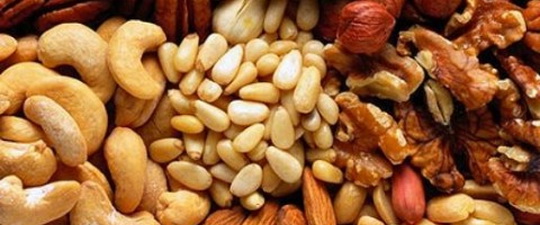
Nuts are essential in the diet, as they contain not only proteins, but also mono-unsaturated fats. Walnuts also contain omega-3 fatty acids. This makes them especially healthy, but they contain a lot of calories, so you shouldn't consume them in large quantities.
Master several recipes for bean dishes and diversify your menu.
Eat tofu; cook beans and pea soups with vegetables.
Prepare lobio and side dishes from frozen green beans.
Add beans, peas, and bean sprouts to salads.
Peanuts are essential for a healthy diet - they are rich in folate, which clears homocysteine from the blood, and magnesium, which lowers blood pressure.
The benefits and importance of milk and dairy products
The main benefit of dairy products (milk, kefir, cottage cheese, yogurt, cheese) is that they are the main sources of calcium. You need to consume 2-3 units per day. dairy products.
1 unit = 250 ml skim milk, milk or yoghurt 1 fat
1 unit = 30 g cheese with less than 20 fat content
Children, pregnant and breastfeeding women are recommended to eat at least three servings (conventional units) of these products. Great importance The benefit of dairy products for the human body is also that they are a source of protein and represent an alternative to meat, poultry and fish for some vegetarians. For your daily diet, consume milk and low-fat dairy products (kefir, spoiled milk, cheese, low-fat yogurt). Reduced fat milk contains the same amount of calcium and protein as whole milk. By consuming low-fat milk, you will reduce your intake of saturated fats, which cause increased cholesterol levels, atherosclerosis, and coronary heart disease.
Yogurt is considered one of the healthiest foods, but most flavored varieties are high in fat and sugar. Yogurts containing Lactoacillus acidophilus, the bacteria used to make kefir and acidophilus, are especially beneficial. These live bacteria help fight infections and restore intestinal flora. Pasteurized, sterilized yogurts that have long-term storage do not have these properties, since the bacteria are killed during heat treatment. If you add finely chopped fruit or a tablespoon of chopped nuts to natural yogurt, this fermented milk product will become a satisfying snack.
With proper fermentation, fermented milk products (kefir, yogurt, fermented baked milk) not only retain the main beneficial features milk, but also contain microorganisms that prevent the development of putrefactive microbes in the large intestine.
The importance of milk and dairy products in healthy diet difficult to overestimate. Cottage cheese, especially low-fat, is considered a valuable dairy product. It contains a large amount of protein (17%), a small amount of fat - 0.5%. Low calorie content (80 kcal per 100 g of product) allows us to recommend it to people with excess body weight. Cottage cheese, like other dairy products, contains a relatively large amount of the essential amino acid methionine, which prevents the development of liver diseases.
Be sure to include low-fat cheese in your diet; it is rich in calcium. Sprinkle cheese over pasta and cooked vegetables, and melt on hot toast and pizza.
Fats and vegetable oils in nutrition
Saturated fat represented by butter, margarine, various types cooking fats should be used sparingly. It is also recommended to reduce the consumption of fat contained in other foods, such as milk, meat, potato chips, baked goods, etc. To do this, you need to give preference to low-fat foods, such as skim milk, lean meats. Give preference to foods that contain more unsaturated fatty acids.
It is advisable to cook food by steaming, boiling, baking or in the microwave. The addition of fats and oils during cooking should be reduced. When limiting your consumption of animal fat, you should opt for vegetable fats in the form of olive, sunflower, and corn oils. However, their high calorie content should be taken into account.
1 unit = 1 tbsp. spoon of vegetable oil (regular margarine)
1 unit = 2 tbsp. spoons of diet margarine
1 unit = 1 tbsp. spoon of mayonnaise
Vegetable oils play a huge role in nutrition - having a high content of monounsaturated fats, they protect the heart and lower the level of “bad” cholesterol.
It is recommended to increase the proportion of polyunsaturated fats obtained from fatty fish - mackerel, herring. Oils high in polyunsaturated fats are sources of vitamin E and lower cholesterol levels, but when consumed in large doses they significantly increase caloric intake.
Types of olive oils for nutrition
Olive oil in nutrition is an excellent salad dressing, seasoning for meat and fish. It can be widely used for frying and baking - it is resistant to high temperatures.
Main types of olive oils for nutrition:
"Supernatural olive oil"(Extra Virgin Olive Oil) is made from selected quality olives and does not require cleaning.
"Natural olive oil"(Virgin Olive Oil) - does not require purification.
"Olive oil"(Olive Oil) processed (refined) and flavored with ultra-natural olive oil. This is the best-selling variety and is much cheaper than the above varieties.
Unhealthy foods: salt and sugar
Unhealthy foods, the consumption of which should be limited: salt, sugar, alcohol.
Salt consists of sodium and chlorine. The body needs some sodium to regulate water balance. Consuming large amounts of salt leads to the fact that the kidneys cannot cope with its excess, which accumulates, retaining water in the body. This usually leads to increased blood pressure and edema.
What results can you get if you limit your salt intake? In an analysis of a large international study of 10,000 men and women from 32 countries, the following conclusions were drawn.
Reducing daily salt intake to 5.8 g throughout life by age 55 would result in a 9 mmHg reduction in systolic blood pressure. Art. With such a salt regimen, the risk of strokes would be reduced by 23%, mortality from coronary heart disease by 16%, and overall mortality by 13%!
In patients with hypertension, salt restriction helps reduce blood pressure and improve well-being.
To improve the taste of unsalted foods, add healthy substitutes: lemon juice, herbs, spices, garlic, onions, vinegar, black pepper. You can use salt substitutes based on potassium chloride, but if you have kidney or heart problems, consult your doctor.
Another unhealthy food product is sugar (including that found in sweets, sugary drinks, and sweetened foods). It contains many calories, but no vitamins or minerals. To prevent obesity and diabetes, it is not recommended to consume sugar frequently and in large quantities.
Sugar substitutes do not contain energy and can be consumed in small quantities for diabetes and low-calorie diets.
Preparations made from berries and sugar are less harmful than just sugar because they contain vitamins.
Proper nutrition: food and alcohol
Proper nutrition and alcohol are incompatible concepts. Alcohol contains many calories: 1 g of pure ethanol (96% alcohol) provides 7 kcal, but does not provide the body with nutrients. For example, 1 bottle of vodka (500 ml) contains 1500 kcal. To a healthy person It is recommended to drink alcohol only in safe doses.
1 unit = 120 g (1 glass) red wine.
We often use the terms “healthy”, “rational”, “proper” or “balanced” nutrition, while understanding by them certain general principles, based on the exclusion of harmful and inclusion of healthy foods from the diet.
I had to deal with absolutely different interpretations of these terms from a large number different people. All of them were formed on information gleaned from the Internet or via TV. And the general information background of the media regarding a healthy (balanced) diet is the same - there are healthy and harmful foods.
In fact, this is a very superficial view. There are no harmful and healthy products. There are certain conditions in which some products are in demand (harmful) more than others. For example, the same sugar, during prolonged physical or mental stress, is much more needed by the body than vegetables considered “healthy”.
It would probably be possible not to address this topic if the misunderstanding of the phrase “balanced diet” did not make it, in the understanding of the population, a certain restrictive type of nutrition similar to a diet. So let's figure it out...
The difference between a balanced diet and diets
A WHO survey showed that up to 93% of the population European countries thinks he eats well. At the same time, only 15% are satisfied with the quality of food, and 57% plan to change it to something more healthy. That is, more than half of the population, when their food needs are fully satisfied, think about its benefits for the body.
Unfortunately, the vast majority of them will never eat a balanced diet due to a misunderstanding of the essence of this type of nutrition.
Our health is supported by two pillars - a balanced diet and physical activity. At the same time, a balanced diet is often confused with diets and reduced-type nutrition systems, not to mention the fact that, in the minds of the population, a balanced diet and a balanced diet are considered synonymous.
In fact, a balanced diet, unlike diets, fully meets the body’s daily energy needs and includes the entire range of foods, nutrients, vitamins and minerals. If the main meaning dietary nutrition consists in excluding any key nutritional elements, or a deliberately low-calorie diet, then a balanced diet, on the contrary, requires complete satisfaction of the body in all energy and nutritional needs.
Diets are not only difficult, but also extremely undesirable to stick to for a long time; a balanced diet is the most familiar type of nutrition for the body. The type on the basis of which it grew and developed, to which it adapted, for tens and hundreds of thousands of years. Therefore, by and large, a balanced diet cannot cause any inconvenience.
In just a few weeks, after following it, it becomes habitual and the only acceptable one.
Basics of a balanced diet
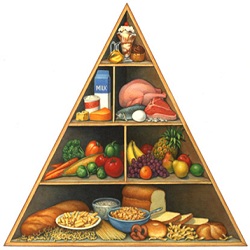 1. All food products are divided into 5 groups based on their nutrient content:
1. All food products are divided into 5 groups based on their nutrient content:
Flour products and cereals
Dairy
Protein products
Each group has its own unique set of nutrients, so your daily diet should include foods from all five groups.
2. Each of the five groups, with the exception of vegetables, has its own limitations on the quantity shown. At the same time, attention should be paid to the most complete coverage of foods from each nutritional group in the weekly nutrition cycle. Frequent meals and snacks provide an opportunity to more fully diversify your diet.
3. A balanced diet is designed for the long term, so there are no absolute prohibitions on any product.
Daily products on a balanced diet
A healthy, balanced diet is not a frozen dogma. As scientific research develops and deepens, more and more new factual material appears, which is included in all spheres of human life. The diet shown is no exception. It is constantly changing and supplemented, so it is important to constantly stay informed the latest trends adjusting your diet.
This range of products is responsible for supplying the majority of carbohydrates and fiber to the diet, so preference should be given to a certain category of products from this group. If bread, then whole grain, if pasta, then durum wheat, if rice, then brown, if cereal, then oats, etc., then these products in their niche have a high content of soluble and insoluble fiber, minerals and vitamins.
You should eat 4 servings of foods from this group per day, but you can eat less if you use only whole grains, since they are more biologically valuable, which in turn allows you to reduce the caloric content of your diet.
 One serving of flour products and cereals is:
One serving of flour products and cereals is:
1 bun or 2 slices of bread
A glass of cooked pasta, rice or noodles
1 cup porridge, 0.5 cups muesli or 1.3 cups breakfast cereal
Dairy products provide the body with protein, vitamin B 12, calcium and riboflavin. During the day you should include at least 2 servings of dairy products (low-fat or low-fat).
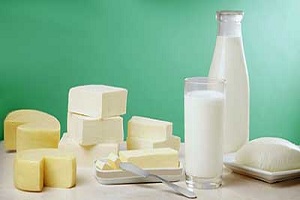 One serving of dairy products is:
One serving of dairy products is:
1 cup (250 ml) regular milk or 1 cup soy milk soy milk
40 grams of cheese
200 gram package of low-fat yoghurt or 250 ml custard
This group includes meat, poultry, fish and some legumes and nuts. All foods are rich in vitamin B12, protein, iron and zinc (in varying concentrations and forms), so it is important to include each of these foods in your weekly nutritional cycle. It is recommended that at least 1, and preferably 2, servings of products from this group be included in the daily diet. In this case, it is advisable to include lean red meat three times a week, and fish 2 times.
One serving of protein foods is:
85 grams lean cooked beef, veal, pork, lamb or chicken
100 grams of boiled (steamed, stewed, microwaved, grilled) fish
One-half cup of raw beans, chickpeas, or lentils, or one-third cup of nuts or almonds
 One serving of vegetables and legumes is:
One serving of vegetables and legumes is:
One cup of leafy vegetables
Half a cup of regular vegetables or legumes
One medium sized potato
Fresh, frozen or canned fruits, loaded with vitamin C and fiber, should be on your table every day. Dried fruits and juices cannot be a complete replacement for fruit, so they should be consumed as a last resort. Your daily diet should include 2 servings of fruit.
One serving of fruit is:
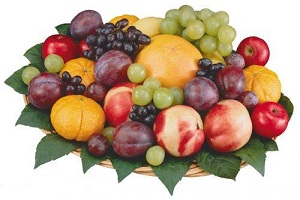 - a medium-sized apple, banana or orange, or 2 small fruits such as kiwi or apricot
- a medium-sized apple, banana or orange, or 2 small fruits such as kiwi or apricot
1 cup diced canned or fresh fruit
4 pieces of dried fruit or 1.3 tbsp. spoons of raisins
Half a glass of juice
Healthy oils and fats
Fats and oils, in their mass, are inseparable from foods; they are found almost everywhere, so the human body is able to do without animal fats and virtually without vegetable fats. It is only necessary to distinguish between theoretically unwanted and desirable fats. The latter include unrefined vegetable oils, avocados, seeds and nuts, which should be included in the daily diet.
The daily intake of these products: 2 teaspoons of vegetable oil, or 10 nuts, or 2 tbsp. spoons of avocado.
Liquids
Include in your diet more water, can be lightly flavored with fruit, and tea. If you are watching your weight, then completely eliminate fruit juices, soft carbonated and sweetened drinks.
Pleasures
A balanced diet allows you to include any favorite foods in your diet, such as chocolate, sweets, cookies, alcohol, etc. The main thing is not to replace the main diet with these products, and use them from time to time.
Physical exercise
Although physical activity does not belong to a balanced diet, without it there can be no talk of healthy body. Physical exercise not only allow you to maintain weight, but also increase the overall tone of the body, charge it with energy and clear your head of negativity. The combination of rational nutrition and physical activity Aerobic fitness is the path to a long, healthy life.
The minimum volume shown is 150 minutes of walking per week or 20-25 minutes. daily.
Nowadays, excess weight is the scourge of our time. AND most of people, to one degree or another, face this problem. Of course, most people who want to lose weight are women, but men Lately also begin to strive to change the shape of their body.
In order to lose weight, most people try to use supplements that lead to the refusal of certain foods. People believe that if they eat less, they will get rid of it faster. excess weight. But is this always the case? Often this category of citizens comes to the opposite result, and they not only do not lose weight, but, on the contrary, gain extra pounds.
And in order to get a slim body, you don’t have to just eat less, you need to build a balanced diet. Balanced diet implies that a person consumes what he needs for normal life. If the body receives more nutrients than necessary, then this is the same problem as a lack of these substances in the body. This type of diet is aimed not only at losing weight, but also at overall health of the body. A balanced diet does not exclude any foods from its composition, but on the contrary, you can eat almost everything, but you need to correctly combine certain foods.
Balanced diet
Firstly, these are proteins, since they are building material for muscles, internal organs and skin. Our immune system cannot do without this element. The basis of proteins is twenty-two amino acids, of which the body reproduces fourteen itself, and the rest must be obtained from food. What foods can you find protein in? First of all, it is fish, meat, cheese, eggs. That is, these are animal proteins, and plant proteins can be extracted from nuts, vegetables, soybeans and grains.
Secondly, components such as fats must be present in the body, but this presence must be within acceptable limits. If you exceed this norm, it will affect your health and yours. Weight increases due to the fact that one gram of fat contains significantly more calories than one gram of protein or carbohydrates. There is a term for “good” fats. Fats related to this term are found in fish and olive oil.
Thirdly, we pay attention to carbohydrates, as they are important in terms of obtaining glucose, which in turn is a source of energy for body cells. Carbohydrates are found in foods such as fruits, grains, legumes and vegetables. But these are the ones that the body needs in the first place. There are also sources of carbohydrates that should not be consumed - sugary foods and sugary carbonated drinks.
The fourth place on our list is fiber, which refers to plant fibers. Its main purpose is to distribute food throughout the intestines. If you want to seriously lose weight, then fiber is a fundamental element in in this case, as it gives a feeling of satiety. Products such as bran, wholemeal bread, prunes, nuts, dried apricots and vegetables are high in fiber.
And finally, minerals and vitamins. The human body is not capable of producing minerals, so they should be obtained through food. Potassium, calcium, iron are minerals that must be supplied to the body, since they are the most important elements for the functioning of the body. As for vitamins, no one doubts their usefulness and the body should receive them regularly, as they help proper metabolism.
Balanced diet for weight loss
To line up balanced diet it is necessary to determine the required ratio of fats, proteins, carbohydrates and minerals.
The general opinion of doctors and nutritionists leads us to the following consumption figures: the amount of protein should be 10-35%, fat, respectively, 20-35% and carbohydrates, about 45-65%.
A balanced diet must be built based on excess weight, that is, it is necessary to determine how many kilograms need to be removed from the body. At the beginning of the diet, you can use a low-calorie diet, but a balanced one. And do not forget that the daily amount of food consumed cannot be less than 1200 calories. Based on this, you must keep in mind that for the normal functioning of the body it will be optimal if you begin to receive about 2400 calories, and if your efforts are aimed at losing weight, then the average number of calories is 1500.
You should also not forget about maintaining water balance and for this you need to drink about eight glasses of water daily, that is, you should focus on a volume of two liters. For more precise definition The required volume of water must be multiplied by your body weight by 30 ml.
A balanced diet is correct ratio fats, proteins and carbons. The body should receive the most carbohydrates - 50%, followed by proteins - 30% and fats in third place - 20%.
If you are trying to lose weight, then you must be more careful in counting the calories you need. For weight to go down, you need to spend more calories than you receive them. If the body does not receive enough calories, then it goes to the strategic reserve, that is, to your fat. And this leads to the fact that the amount of fat simply decreases and therefore a slim figure begins to beckon you with its reality.
Also keep in mind that a balanced diet involves a psychological adjustment, as you move to new norms of food consumption. Therefore, a psychological attitude is required on your part, which will be based on your desire to improve your figure and improve your health.
Balanced nutrition menu
We will proceed from average parameters and try to build a menu for the day based on 2000 calories.
When shopping in a store, pay attention to the calorie content of the products you purchase. If calorie information is not available, keep in mind that one gram of protein or carbohydrates, when oxidized, produces energy equal to 4.1 kcal, and one gram of fat can release 9.3 kcal. It follows that once you have decided on the amount of daily calories, it will not be difficult for you to make a list of necessary products.
- bun made from whole wheat - 146 kcal;
- small grapefruit - about 41 kcal;
- a glass of skim milk - 122 kcal;
- muesli (about one glass) - 140 kcal;
- butter (one teaspoon) - 34 kcal.
Lunch:
One fruit, for example, an apple - 95 kcal.
You can cook soup using beans.
- a glass of chicken-based broth - 38 kcal;
- half a glass of pre-boiled beans - 18 kcal;
- half an onion - 22 kcal;
- small carrot - 13 kcal.
- half a glass of pre-chopped bell pepper - 14 kcal;
- one tomato - 11 kcal;
- half a glass of cucumbers - 8 kcal;
- season the salad with one spoon of olive oil - 119 kcal.
Can be used as a drink green tea. As for bread, it is advisable not to eat a lot of it and one piece will be the right decision, as it will give us 65 kcal.
Again we eat fruits and, for example, one banana will be enough -105 kcal.
- boiled rice (half a glass) - 338 kcal;
- baked chicken breast - 284 kcal;
- olive oil (one tablespoon) -119 kcal;
- one slice of bread - 65 kcal;
- about one glass of yogurt - 116 kcal.
Harmful products
A balanced diet does not mean that you need to completely deprive yourself of something, but some foods are still undesirable or their consumption must be minimized.
What is undesirable?
- eggs, their consumption should be kept to a minimum, that is, no more than two boiled eggs in Week;
- fried meat of any kind, and generally eat less fried meat;
- everything related to canned food;
- high-fat dairy products;
- coffee and tea (the ban does not apply to green tea);
- various sweets;
- mayonnaise, chips, nuts, etc.
Try to look for replacements for the products you are used to. For example, if you like sweets, then try replacing them with a small amount of honey, or eat a little, within 10-20 grams.
It will be difficult for you to get used to a new diet, so sometimes indulge yourself with familiar food, for example, eat what you love once a week.
The main thing is to maintain a balance in your diet, and you can get rid of excess weight and improve your overall health.
Balanced diet for weight gain
While some are trying to get rid of kilograms, others are no less stubbornly striving to gain them. According to the latter, excessive thinness looks less attractive than athletic forms. But aesthetic aspect is by no means the only reason. Underweight can be no less dangerous than obesity. For women, it threatens infertility, for men – disorders of musculoskeletal functions. People with a delicate constitution often experience loss of strength, headaches, Bad mood. In addition, rapid weight loss often accompanies dangerous diseases.
At first glance, weight gain does not seem like a difficult task - it is enough to eat more and exercise less physically so as not to waste calories. In fact, if you tend to be thin, gaining weight is quite problematic.
Of course, to get better, you need to switch to enhanced nutrition. However, an uncontrolled increase in the amount of food eaten forces all digestive organs to work in emergency mode, which can cause significant damage to health.
In order not to get stomach problems, diabetes, pancreatitis, dental problems and other “joys of life” along with the kilograms, everyone who wants to get better needs a properly balanced diet, which requires adherence to the following principles:
1. Body weight should increase slowly, no more than 2-4 kg per month. It is impossible to recover quickly without testing the body's strength. The diet for gradual gain should be designed so that for each kilogram of weight there is no more than 50 kcal. That is, if your weight is 50 kg, then the total caloric content of what you eat per day should be about 2500 kcal.
2. To build muscle and minimize fat gain, your diet should focus on protein foods. It is necessary to consume 1.5-2 g of proteins per 1 kg of weight. Harmless suppliers of protein include fatty fish, poultry breasts, and dairy products.
3. You need to eat at least 4 times a day. With a strict training regime, you can eat up to 8 times a day. The less frequently you eat, the more fat is stored for future use. Juices, cream, and milk are suitable for drinking.
4. In a balanced diet for a month, the menu for each day should be composed with approximately the same number of calories. Even on days without much physical activity, you need to eat in the chosen mode, without reducing the calorie content of foods.
5. The most main principle: a complete balanced diet must certainly be combined with exercises to increase muscle mass, because it has long been known that muscles grow only with regular exercise. Without strength training, weight will be gained only from fat and water. It is very important to organize your diet so that a meal containing proteins and carbohydrates follows as soon as possible after each workout.
Balanced diet: sample menu for weight gain
For breakfast, you should choose food rich in carbohydrates. Porridges made from oatmeal, rice, buckwheat, and semolina are excellent for this. A fruit salad wouldn't go amiss.
Lunch should definitely combine protein foods with vegetables. For the first course, any soup with meat broth is suitable. For the main course, you can eat boiled chicken with a vegetable side dish or bean puree.
For dinner, you can steam fish or eat a portion of cottage cheese. It is better not to eat carbohydrate foods to avoid increased insulin synthesis, which inhibits the production of somatotropin, a hormone involved in muscle building during sleep.
Best for snacking protein shakes, fruits, berries, nuts. You need to drink at least 30 ml of water per kilogram of weight.
Balanced diet during pregnancy
The diet of a pregnant woman should be prepared with special care. This takes into account age, constitutional features, pregnancy, physiological energy consumption, and concomitant diseases.
Balanced nutrition for pregnant women - most important factor full formation of the fetus. Sufficient calorie content of food and its quality composition affect the course and consequences of pregnancy. Compliance with dietary recommendations significantly affects the well-being of a woman and the health of the unborn child. Both hypocaloric (insufficient) nutrition and overeating are extremely undesirable.
In the early stages, the needs of the embryo are very minor, so there is no need to adhere to special diets. It is enough to monitor the quality of food consumed and its environmental cleanliness.
The phase of the most active growth of the fetus is observed in the second half of pregnancy. Therefore, during this period, the need for proteins, calcium, iodine, iron, folic acid, and vitamins increases. Lack of these substances leads to miscarriage, osteoporosis, anemia and others. dangerous problems. The daily calorie requirement increases to 2500-3000 units, while a rationally balanced diet should take into account the ratio of basic nutrients: proteins - up to 120 g, carbohydrates - about 400 g, fats - up to 80 g.
The basis of the diet of pregnant women should be meat, dairy products, fish, herbs, fresh fruits and vegetables, cereals and legumes. It is better to avoid fried, fatty, smoked, spicy foods. It is also advisable to minimize the consumption of canned, pickled, and salty foods.
Balanced nutrition menu for pregnant women
Monday
Breakfast: cocoa with milk, 1 bun.
Lunch: sandwich with butter and egg, salad.
Lunch: meat broth, boiled chicken breast, fruit jelly.
Dinner: cottage cheese casserole, fruit salad, tea.
Before bed: milk.
Tuesday
Breakfast: sweet cottage cheese with sour cream, cookies, tea.
Lunch: cheese sandwich, vegetable stew.
Dinner: chicken soup, mashed potatoes with steamed cutlet, green salad, orange juice.
Dinner: borscht, boiled veal, milk jelly.
Before bed: kefir.
Wednesday
Breakfast: pancakes with buckwheat, yogurt.
Lunch: cheesecake with cottage cheese, milk.
Lunch: rice soup, braised cabbage with cutlet, compote.
Dinner: seafood salad, potato balls, tea.
Before bed: yogurt.
Thursday
Breakfast: buckwheat, sweet tea.
Lunch: boiled liver, cabbage salad, milk.
Lunch: lentil soup, baked chicken breasts with boiled potatoes, carrot juice.
Dinner: steamed fish with vegetable side dish, dried fruit compote.
Before bed: yogurt.
Friday
Breakfast: cheesecakes, sour cream, sweet tea.
Lunch: cheese, pasta casserole, milk.
Lunch: green cabbage soup, vinaigrette, compote with prunes.
Dinner: meat cutlets steamed, stewed cabbage, tea.
Before bed: kefir.
Saturday
Breakfast: rice pudding, milk.
Lunch: toast with jam, scrambled eggs, fresh tomatoes.
Lunch: pickle soup, boiled beef, pea puree, berry juice.
Dinner: fish balls, rice, vegetable salad.
Before bed: milk.
Sunday
Breakfast: hot toast with egg and cheese, cocoa and milk.
Lunch: apple pudding, tea.
Lunch: pumpkin cream soup with croutons, baked fish with buckwheat porridge, fruit jelly.
Dinner: macaroni and cheese, green salad, tea.
Before bed: yogurt.
Balanced vegetarian diet
Long-term refusal of animal products leads to a deficiency of zinc, calcium, iron, some vitamins, and essential acids, since plant foods contain these substances in small quantities or are absent altogether.
A balanced diet without meat and fish is intended to compensate for the lack of important substances, but from other sources.
Studies have shown that the human body needs 53 g of protein per day. If you drink a liter of milk (17 g of protein) every day, eat half a pack of cottage cheese (14 g), 100 g of cheese (20 g) and one egg (6 g), then you can easily fill the existing norm only with dairy products. Other sources of protein include nuts, soy, and black beans. There are a lot of proteins in mushrooms, but they are almost not absorbed by the human body due to the presence of chitin.
The absence of fish in the diet deprives the body of Omega-3 fatty acid, which is very necessary for normal functioning. An alternative to fish in this case are flaxseed, seaweed, and pharmaceutical fish oil.
Soy milk and tofu cheese will help compensate for the lack of vitamin B 12 and calcium. Sources of zinc include cereals, cheese, nuts, bran bread, and legumes. Eating 2 Brazil nuts a day is enough to provide your body with selenium.
For adherents of strict vegetarianism, who refuse not only meat, but also eggs and milk, a complete balanced diet cannot be provided without the use of special food additives.
Balanced nutrition for the day
Breakfast: muesli, with the addition of nuts and chopped fresh fruit, topped with kefir or yogurt.
Lunch: dumplings with berries or cottage cheese, milk.
Dinner: bean soup or okroshka, zucchini pancakes, vegetable salad with olive oil.
Afternoon snack: toast with cheese and egg.
Dinner: buckwheat milk porridge, fruit salad, kefir.
Balanced diet. Vegetarian recipes
Dessert pilaf
Cut 1 kg of pumpkin into large cubes, 3 yellow apples and 2 green pears into small slices. Steam a glass of raisins and dried apricots in hot tea. Wash 300 g of rice well. Place the pumpkin in a cauldron with heated oil, evenly pour a third of the rice on top, spread the apples and pears in an even layer, cover it again with rice and, finally, cover the layer of steamed dried fruits again with the remaining rice. Evenly pour melted butter (0.5 cup) over the pilaf. Add some salt to the water and pour in the pilaf so that the top layer is completely covered. After boiling, simmer the pilaf on the lowest heat for 40 minutes.
Vegetable casserole
Grind 1 onion, 1 beet and 1 carrot in a blender, place the vegetable mixture in a baking dish and pour in a milk-egg cocktail (half a glass of milk beaten with three eggs). Preheat the oven to 180 degrees, place the mold in it and leave for 30 minutes. Serve the finished casserole with sour cream or yogurt.

